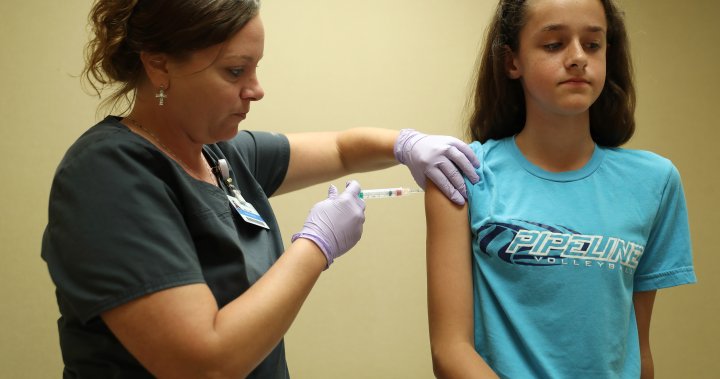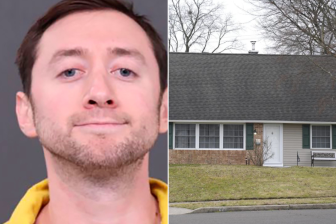Cervical cancer is the fastest-growing cancer in females in Canada and is also the fourth most common form in women across the world. Despite its prevalence, there is a vaccine that is highly effective in preventing cervical cancer, but it comes at a high cost to many.
The human papillomavirus (HPV) is one of the most common sexually transmitted infections in Canada, with more than 75 per cent of sexually active adults estimated to develop it at some point in their lives. It is also the primary cause of cervical cancer as well as anal, vaginal, vulval, penile and mouth and throat cancers in men or women, according to the Canadian Cancer Society.
Introduced in Canada in 2006, the HPV vaccine has proven highly effective in preventing cervical cancer. While publicly funded for some, many must bear the out-of-pocket cost, which typically amounts to around $600.
“It’s a terrible fact because we can prevent cervical cancer with the HPV vaccine, so there’s no reason why it should be raised,” said Dr. Diane Francoeur, CEO of the Society of Obstetricians and Gynecologists of Canada (SOGC).
“To treat cervical cancer, we use radiation therapy with a lot of side effects because the uterus sits between the bladder and the bowel. It is a really aggressive cancer. We don’t want that for any women in Canada when we can prevent it,” she added.
In Canada, the HPV vaccination is recommended for all females aged nine to 45 and for males aged nine to 26. The vaccines are given two or three times over a six to 12-month period.

It’s publicly funded throughout Canada through school-based programs, but the criteria for a free dose depends on what province you live in. This is because the vaccine is most effective when it is given during the pre-adolescent years, prior to exposure to the virus.
In British Columbia, the province provides public funding for the HPV vaccine for grade six, but also up to age 26 (if you start your shot series before the age of 19).
In Alberta, the province offers a free vaccine for students in grades six and nine and up to the age of 26. Similarly, the Northwest Territories covers the vaccine for students in grades four and six, and individuals up to the age of 26.
But in Ontario, the vaccine is publicly funded only for grade seven students and individuals in grade school, and up until the end of grade 12.
People who do not qualify for these programs can privately purchase the HPV series from their family physician, which is around $200 per dose.
“It’s a real burden on Canadian women,” Francoeur said. “Nowadays, it’s so hard for young people to have a home, with inflation just to pay your daily bills that the vaccination to prevent the cancer is it’s going to be pushed further.”
HPV vaccine effectiveness
A recent study out of the United Kingdom showed that the HPV vaccine dramatically cuts cancer risk among women who received it during adolescence.
The study, published Jan. 22 in the Journal of the National Cancer Institute, found that Scotland has detected no cases of cervical cancer in women born between 1988 and 1996 who were fully vaccinated against HPV between the ages of 12 and 13.
Get the latest Health IQ news.
Sent to your email, every week.
The study’s authors examined the medical records of around 450,000 women born between 1988 and 1996 who were eligible for cancer screening. Among this cohort, 40,000 received the HPV vaccine between the ages of 12 and 13, while 124,000 were vaccinated at or after 14 years old. The remaining group, nearly 300,000 women, did not receive the vaccine.
No instances of cervical cancer were detected among the women who were vaccinated before the age of 14, regardless of whether they completed the full three-dose series or only received one or two doses.

Dr. Gregory Nelson, a professor of Obstetrics and Gynecology at the University of Calgary, praised the study saying it shows the importance of getting the HPV vaccine.
“It’s a really exciting study,” he said. “Within this particular cohort, they found no cases of invasive cervical cancer, which is a very dramatic finding. I think just further attesting that there’s a really high importance to patients receiving the HPV vaccine.”
He said there have been problems with the HPV vaccine uptick despite the importance of this vaccine for the prevention of cervical cancer.
“Unfortunately, like with all other vaccinations we’re still seeing people being resistant to this,” he said. “We’re doing our best to educate the public about it. But unfortunately, we are still seeing vaccine hesitancy with respect to this specific vaccine.”
In February 2022, Gillian Cameron, from London, Ont., took to social media to voice her disappointment with the Ontario government after learning the Gardasil vaccine, one of Canada’s three approved HPV shots, came with a price tag of around $600 (the cost varies across Canada and depends on how many doses you need).
Cameron (who is now 28 years old) along with many of her friends, were 11 and 12 years old when the HPV vaccine was initially approved in Canada in 2006. However, she explained that because the vaccine was relatively new and information about it was scarce at the time, her parents decided to forgo her shot, despite its free availability.
“It basically boiled down to our parents didn’t have a lot of information at the time. It was a new vaccine. There’s a lot of misinformation going around and was a touchy subject,” she told Global News. “They didn’t want to discuss vaccinating 11-year-olds for a sexual health problem.

Many of her friends were not vaccinated for the same reasons, she added.
“So it became kind of a pain point for us because we’re having to pay $600 to get vaccinated for this. And this was no fault of our own. This was a choice that was taken away from us by our parents, and we’re the ones now having to face the consequences of that,” Cameron said. “Between student loan payments, our rent, car payments… there was no way any of us were going to be able to afford this.”
This spurred Cameron to start an online petition in 2022 urging the Ontario government to broaden access to the HPV vaccine, making it free for individuals under the age of 26. To date, the petition has amassed over 33,000 signatures. She expressed her hope to extend eligibility for a free vaccine to older age groups in the future.
“The TikTok got a lot of attention, and that’s what really made the petition start to blow up,” Cameron said. “And I started getting comments on the petition with similar stories to mine just saying, ‘my parents didn’t want to vaccinate me either’.”
The petition has evolved into a campaign called ‘Make HPV Vaccine For Me,’ led by Cameron and supported by professionals in the field, such as Kirsten Krose, president of SWON Public Affairs in London, Ont.
“My best friend out in Alberta just is in remission now from cervical cancer. She never got the HPV vaccine. She now has a perforated bowel and they’re looking there might be a spot on her liver and other parts of her body,” Krose said.
Francoeur echoed the financial strain the out-of-pocket cost of the HPV vaccine imposes on Canadian women, especially since insurance coverage can be inconsistent.
She believes that making the vaccine more accessible to Canadians, can decrease the cases of cervical cancer across the country.

When questioned about why the vaccine wasn’t universally funded, she explained that some provinces may deem it economically unfeasible. However, some places find it more cost-effective to fund the vaccines than treatment. The Northwest Territories, for example, offers the shots free of charge to women under 26.
“They give it to everyone because the cost of having people travel south when they need to have medical care is so expensive that they did a cost analysis, and it’s for them, it’s cheaper to vaccinate everyone, which is good,” she said. “There’s a lot of money being spent in health-care in Canada. You need to decide at the government level, where are you going to put the money,” she added.
Eradicating cervical cancer by 2040?
Following a 30-year decline, the incidence rate for cervical cancer in the country has been increasing 3.7 per cent every year since 2015, according to a 2023 report from the Canadian Cancer Society.
The trend has been associated with suboptimal screening uptake, a lack of follow-up after screening, as well as higher prevalence of HPV due to changing sexual practices and suboptimal coverage of HPV vaccination, the report said.
Cervical cancer can be prevented by receiving the HPV vaccine before exposure of the virus and by screening for precancerous conditions of the cervix most commonly through a pap test. Because of these prevention opportunities, many believe that cervical cancer could be virtually eliminated in some countries, the report said. This includes Canada.

The Canadian Partnership Against Cancer has set a target in its action plan to eliminate cervical cancer in the country by 2040, according to a 2020 report.
The report suggested that boosting HPV immunization rates can be achieved through heightened awareness about the vaccine’s safety and efficacy. Another strategy is to implement at home HPV tests, a pilot program that is currently happening in British Columbia. Several provinces are transitioning from Pap tests to HPV tests as their primary screening method for cervical cancer, citing its superior ability to detect the virus.
The report did not include expanding the age eligibility of a publicly funded vaccine.
Despite the rising rates of cervical cancer, Cameron remains hopeful that the situation will improve, with more provinces expanding eligibility. Meanwhile, she still awaits her own HPV vaccine and hopes it will soon be covered by the province.
“I’m hopeful, this seems like such a no-brainer,” Cameron said. “It’s crazy that this hasn’t already happened already.”
— with files from Global News’ Saba Aziz and Heather Yourex-West




